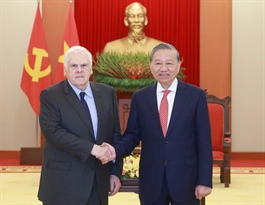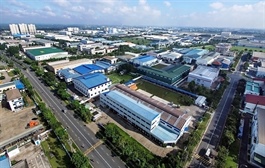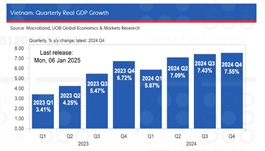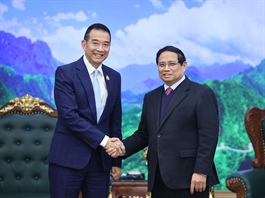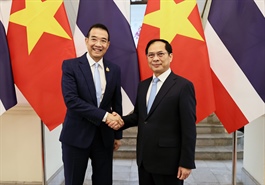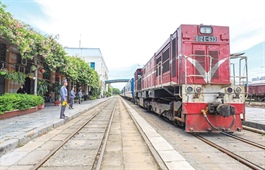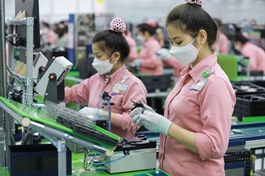New rules a boon for high-tech players
New rules a boon for high-tech players
New regulations for procedures and standards for determining high-tech product manufacturing are expected to help pull in more high-tech funding.
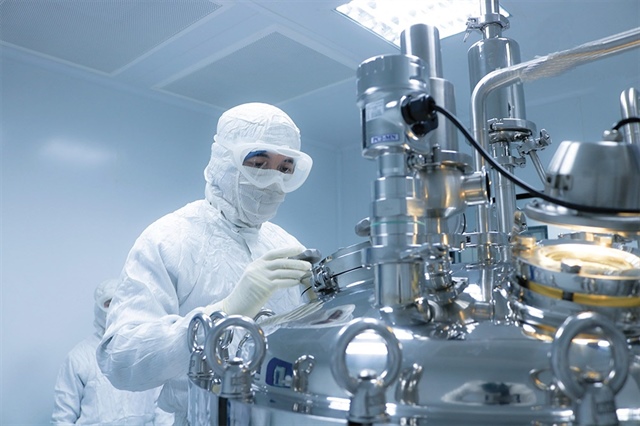
New rules a boon for high-tech players, photo Le Toan |
In mid-February, the government provided guidance on the Law on Investment 2020 and clarifying regulations for investment procedures. One key regulation allows investors to implement them by either making a deposit or submitting a guarantee commitment from a credit institution regarding the deposit obligation.
This must be carried out after receiving the investment registration certificate and before implementing the compensation, support, and resettlement plan approved by a competent authority, in cases where the investor does not advance these areas.
Alternatively, the submission can occur before the issuance of the land leasing decision or land use purpose change permission or within 30 days from approval, if the land area has already been compensated, supported, resettled, and reclaimed by the state.
Regarding regulations ensuring the implementation of projects in Vietnam, investors must either make a deposit or obtain a bank guarantee to secure their commitment when requesting the state to allocate or lease land or permit a change in land use purposes.
Additionally, depending on the scale, nature, and implementation timeline of each project, the deposit amount ranges from 1-3 per cent of a scheme’s capital. If a venture is divided into multiple phases, the deposit is paid and returned in accordance with each phase, except in cases where return eligibility does not apply.
“These regulations benefit investors by simplifying procedures, reducing the time required to obtain licences, and ensuring that projects are implemented as planned. These adjustments will also help build confidence,” said Hoang Manh Phuong, director of the Legal Department under the Ministry of Planning and Investment.
The new incentives aim to encourage high-tech funding in Vietnam, which currently faces many overlapping regulations that complicate implementation.
“At present, procedures are regulated by multiple laws, including those on land, construction, environment, technology transfer, and fire prevention. These overlaps create a multistep process involving various legal frameworks, which have not kept pace with the growing competition in attracting strategic investors, particularly in semiconductors, high technology, and AI,” Phuong added.
“This policy is one of the government’s latest measures to position Vietnam as a prime destination for high-tech investment, especially in sectors like semiconductors,” he said.
The laws on investment and capital, along with various resolutions, have improved mechanisms for science, technology, and innovation across the country. The revised law on this area is expected to be submitted in May, with a corresponding resolution anticipated soon.
Related rules established standards for determining high-tech product manufacturing projects, took effect in December. Under this regulation, the annual expenditure for research and development must be at least 80 per cent of the venture’s annual operating expenses.
Meanwhile, the total annual expenditure for research, development, and technology application activities must meet specific thresholds based on project scale. For initiatives with a capital scale of at least $240 million and a disbursement of at least that amount within three years of receiving approval, or for those generating total revenue of at least $400 million annually within three years of revenue generation, the required ratio must be at least 0.5 per cent. For all other cases, the ratio must be at least 1 per cent.
The government is also encouraging emerging high-tech industries, with Vietnam making notable progress in semiconductor cooperation with partners in the United States, South Korea, Japan, Taiwan, and the EU, as well as major technology firms such as Cadence, Intel, Qorvo, Apple, Marvell, Samsung, and Synopsys.
For example, at a meeting with Prime Minister Pham Minh Chinh on February 12, Choi Joo Ho, CEO of Samsung Vietnam, and his successor Na Ki Hong confirmed that Samsung will continue expanding its funding in new fields and play a key role in Vietnam’s digital transformation, alongside its existing business activities.
“We hope to continue receiving support from the Vietnamese government and relevant ministries for Samsung’s investment and business activities in the country,” Ho said.
In addition, the prime minister encouraged SK Group to further its involvement in Vietnam by offering consultancy, support, and funding in key areas such as AI research and development, the establishment of a national database, transportation and logistics infrastructure, and renewable energy sources. The PM also urged the group to accelerate undertakings in green and sustainable agriculture while enhancing cooperation in training high-quality personnel.
Vietnam has also been selected as one of six countries participating in the US CHIPS Act initiative to develop the global semiconductor supply chain.
“In fact, many strategic investors in high-tech sectors are ramping up research activities, seeking opportunities, and encouraging large-scale ventures in Vietnam. Therefore, it is both necessary and urgent to develop and refine regulations on investment processes and procedures to shorten implementation timelines and enhance competitiveness in high-tech sectors and fields offering such incentives, particularly for strategic investors,” said Do Hong Quan, general director of Vietnam Investment Consulting.
- 15:28 27/02/2025



